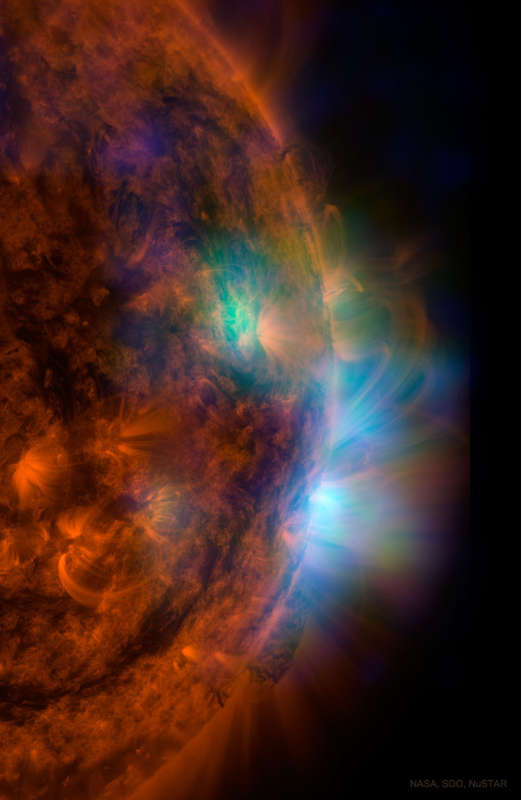The Sun in X rays from NuSTAR

Explanation:
Why are the regions above sunspots so hot?
Sunspots
themselves are a bit cooler than the surrounding
solar surface because the magnetic fields that create them reduce convective heating.
It is therefore unusual that regions overhead --
even much higher up in the
Sun's corona --
can be hundreds of times hotter.
To help find the cause,
NASA directed the Earth-orbiting
Nuclear Spectroscopic Telescope Array (NuSTAR)
satellite to point its very sensitive X-ray telescope at the Sun.
Featured here is the Sun in
ultraviolet light,
shown in a red hue as taken by the orbiting
Solar Dynamics Observatory (SDO).
Superimposed in false-colored green and blue is emission above
sunspots detected by
NuSTAR
in different bands of high-energy
X-rays,
highlighting regions of extremely
high temperature.
Clues about the Sun's atmospheric
heating
mechanisms come from NuSTAR images like this and shed light
on solar nanoflares and
microflares as brief
bursts
of energy that may drive the unusual heating.
Authors & editors:
Robert Nemiroff
(MTU) &
Jerry Bonnell
(USRA)
NASA Web Site Statements, Warnings,
and Disclaimers
NASA Official: Jay Norris.
Specific
rights apply.
A service of:
LHEA at
NASA /
GSFC
& Michigan Tech. U.

